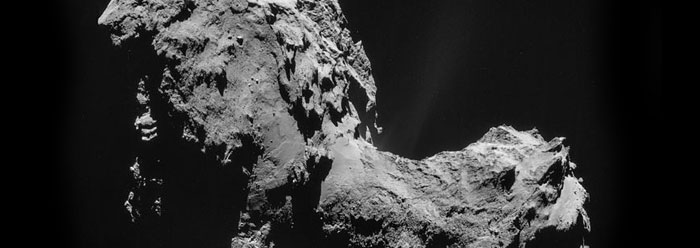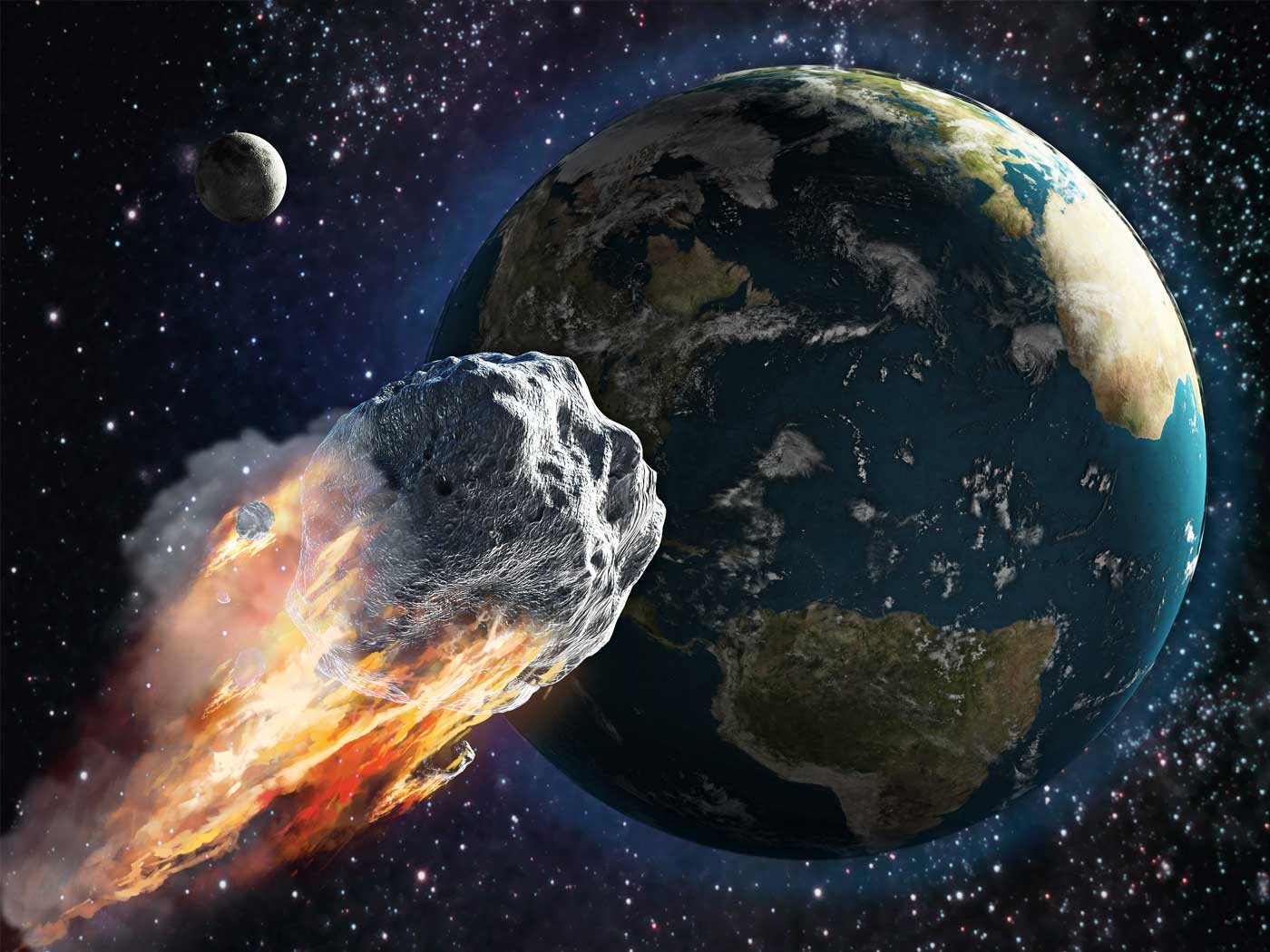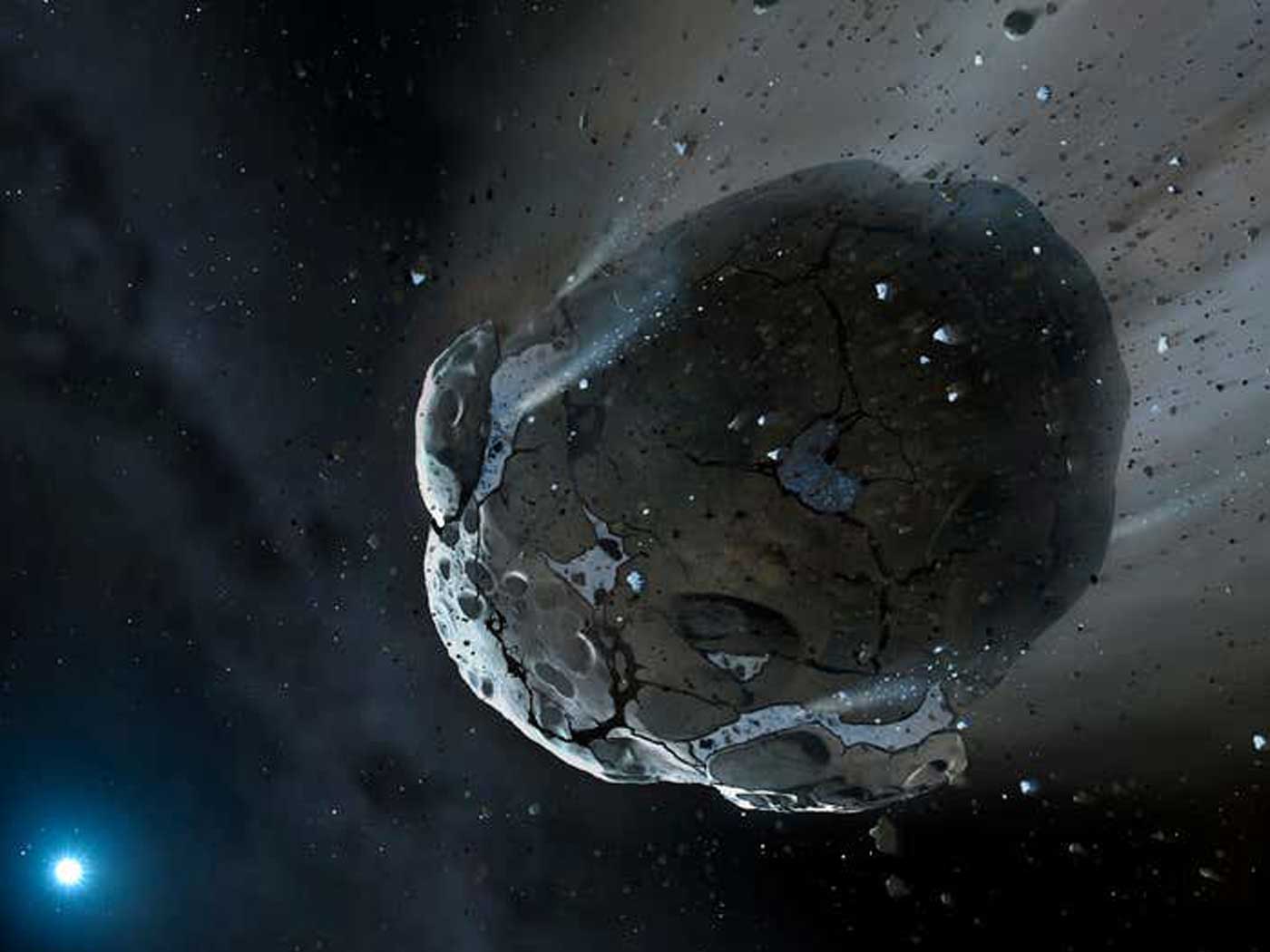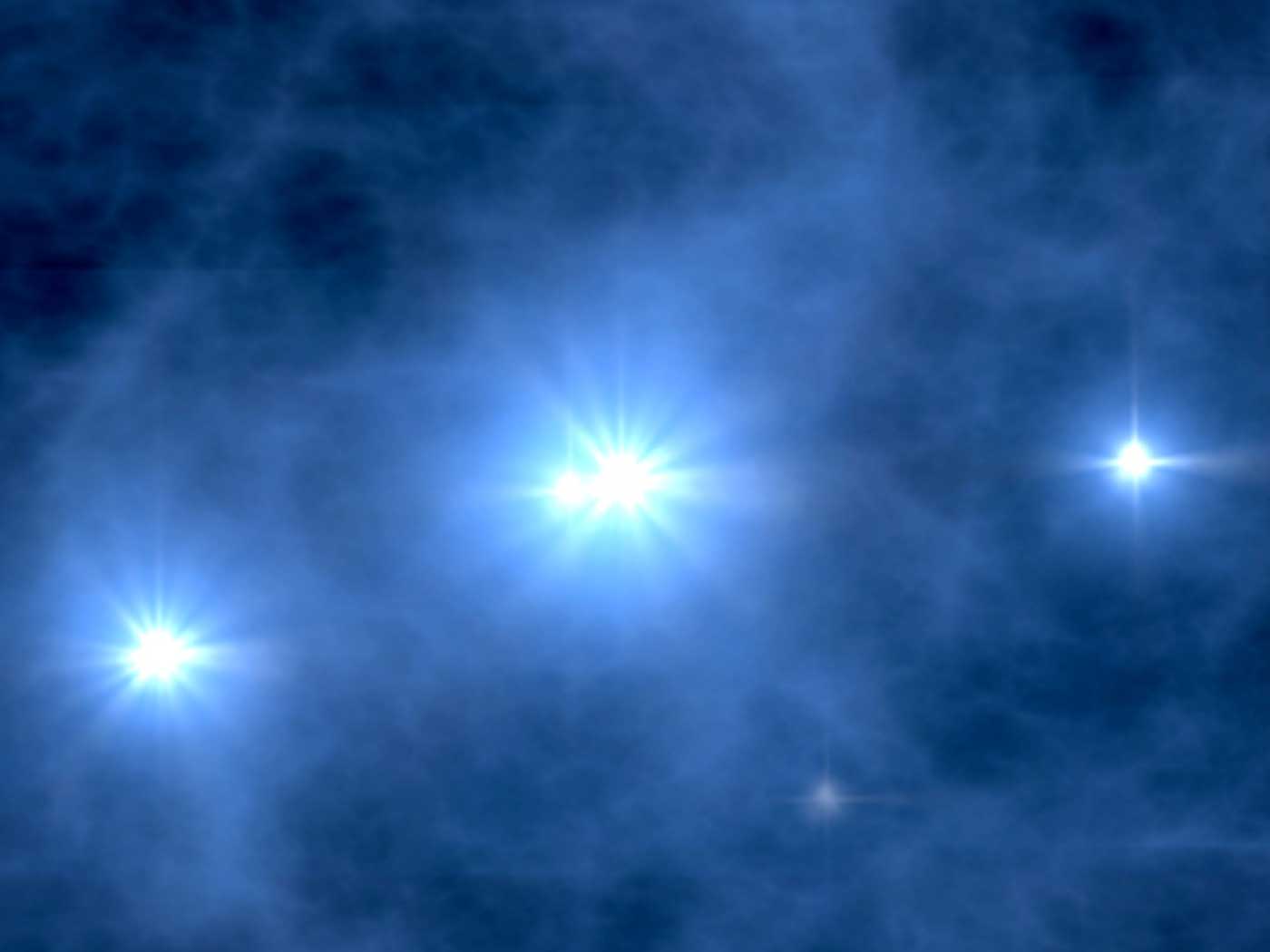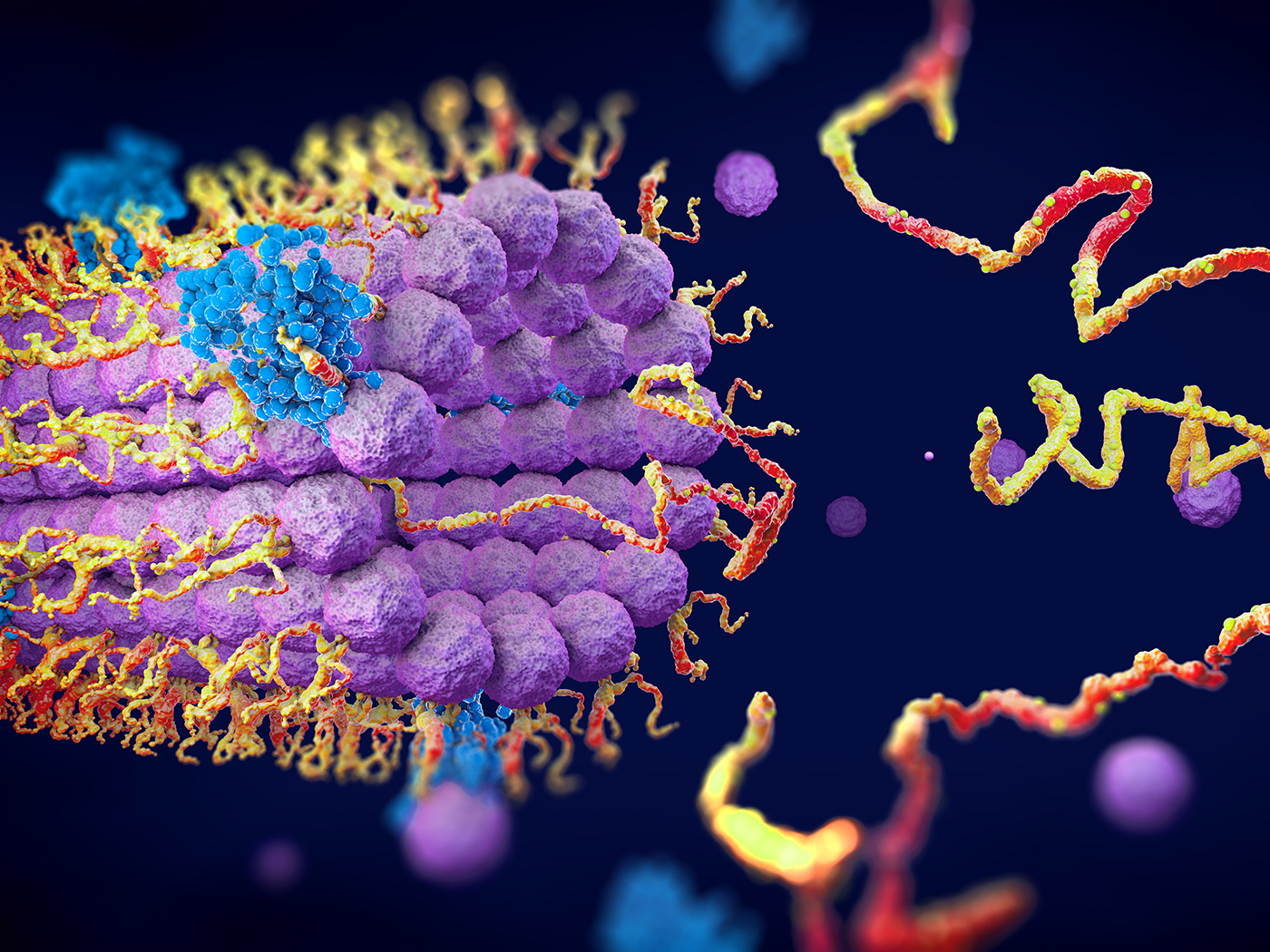The European Space Agency's Rosetta probe travelled all the way to comet 67P/Churyumov-Gerasimenko to collect unprecedented cometary details. The space probe keeps sending unexpected particulars about the comet—particulars with implications far beyond the comet itself.
As Rosetta approached the comet in the fall of 2014, its instruments began detecting chemicals in space nearby the comet. The mission's earliest discoveries included an unexpected fountain-like emission of over 6,000 gallons of water vapor per day.1 Similar to the plumes that eject material into space from Saturn's moon Enceladus, this surprising level of activity points to a much younger comet than commonly asserted.
In December 2014, Rosetta's researchers published more particulars. This time they revealed that the comet's water has a deuterium-to-hydrogen ratio about three times higher than Earth's water.2 Deuterium is similar to ordinary hydrogen but has a heavier, yet stable, nucleus. In the nature-only, billions-of-years view, one enormous pool of matter contributed all the chemicals to both Earth and comets, including all water. The ratio Rosetta detected show Earth and comet 67P did not derive their water from the same source. Instead, the unique version of water in 67P fits an origin by special creation.3
Biblical creation also makes sense of the 67P's active water-vapor plume. If God made this comet only thousands of years ago, then it could still have plenty of material on hand to eject into space. But after more than four billion years, how could it still possess this reservoir of water? For that matter, given that all comets lose mass every time they swing past the blazing Sun, why would comet 67P still exist at all?4
A new Nature study reports a third particular. Comet 67P also emits molecular oxygen, or O2.5 This substance readily reacts with many other chemicals—especially hydrogen. In the secular story, the early solar system was supposed to have abundant hydrogen. How could oxygen possibly have failed to react with so much hydrogen, or anything else, over billions of years? It's like finding a chunk of shiny iron deep underground. It should be covered in rust, if not completely rust-rotten.
Andre Beiler is a University of Michigan physicist who served as lead author of the Nature study. According to Nature News, "Beiler says that he was surprised by both the presence and abundance of molecular oxygen (O2) because it is usually quick to react with other chemicals."6
The study authors ruled out every obvious way that natural processes might have recently produced the comet's molecular oxygen. They suggested that some process must somehow have trapped the oxygen inside tiny ice and dust grains billions of years ago. But does this story hold water?
The idea of preserving oxygen for billions of years doesn't come from science. Observations abundantly demonstrate that the natural tendency of oxygen is to diffuse away, escape from, or readily react with its surroundings. With no science to back this claim, what justification remains other than sheer belief in billions of years?
Consistent with recent creation, our solar system has at least one comet with abundant not-yet-reacted oxygen. The discovery of these three particulars, including molecular oxygen, on a distant comet must seem to secular scientists like finding proteins inside supposedly old dinosaur bones,7 or finding fast-burning blue stars inside supposedly old galaxies.8 Maybe they're all much younger than most imagine.
References
- Thomas, B. European Spacecraft's Comet Close-up a World First. Creation Science Update. Posted on icr.org August 13, 2014, accessed November 5, 2015.
- Thomas, B. Study: Comets Did Not Supply Earth's Water. Creation Science Update. Posted on icr.org December 29, 2014, accessed November 5, 2015.
- Genesis 1:14-15 say, "Then God said, 'Let there be lights in the firmament of the heavens to divide the day from the night; and let them be for signs and seasons, and for days and years; and let them be for lights in the firmament of the heavens to give light on the earth'; and it was so." Accordingly, God created comets on Day 4 of Creation Week and set each one in its unique motion around the Sun, which He also made that same day. Comets have been orbiting and decaying ever since.
- Lisle, J. 2014. The Solar System: Asteroids and Comets. Acts & Facts. 43 (5): 12-15.
- Bieler, A. et al. Abundant molecular oxygen in the coma of comet 67P/Churyumov-Gerasimenko. Nature. Published online before print, October 29, 2015.
- Cesare, C. October 25, 2015. Rosetta sniffs oxygen around comet 67P. Nature News. Posted on nature.com October 28, 2015, accessed November 4, 2015.
- Thomas, B. 2014. Original-Tissue Fossils: Creation's Silent Advocates. Acts & Facts. 43 (8): 5-9.
- Lisle, J. 2012. Blue Stars Confirm Recent Creation. Acts & Facts. 41 (9): 16.
*Mr. Thomas is Science Writer at the Institute for Creation Research.
Article posted on November 16, 2015.




